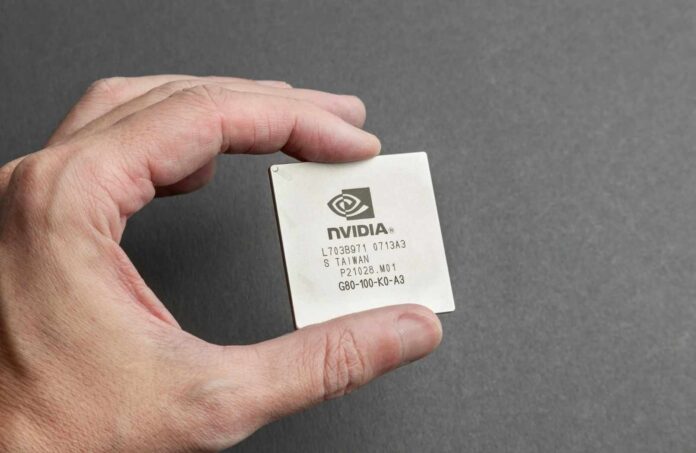- Nvidia has introduced the Rubin AI chip architecture shortly after Blackwell, marking rapid progress in AI technology.
- Rubin includes new GPUs, an Arm-based CPU, and advanced networking components.
- Nvidia aims to maintain its lead in the AI chip market, compete with AMD and Intel, and solidify its top tech company position.
Nvidia has just launched its latest generation of artificial intelligence chips, the Rubin architecture, marking a significant leap forward in AI technology.
This announcement comes only a few months after the release of its previous model, Blackwell, underscoring the rapid pace of advancements in the field and Nvidia’s determination to stay ahead of the competition.
Fast-Tracking AI Innovation
The swift introduction of the Rubin AI chips highlights Nvidia’s aggressive strategy to dominate the AI chip market.
Nvidia CEO Jensen Huang made the announcement just before the Computex 2024 tech conference in Taipei, introducing Rubin as the next step beyond Blackwell.
Despite Blackwell still being in production and set to ship later this year, Nvidia is already pushing forward with Rubin, breaking its own commitment to a yearly release cycle for new AI technology.
What’s New with Rubin?
The Rubin platform comes with several advancements, including new GPUs, an Arm-based CPU named Vera, NVLink 6, the CX9 SuperNIC, and the X1600 converged InfiniBand/Ethernet switch for advanced networking capabilities.
These components are designed to provide faster, more efficient processing and better connectivity, essential for handling the complex demands of modern AI applications. However, Nvidia has not yet disclosed the specific technical details of the Rubin chips.
Staying Ahead in a Competitive Market
Nvidia’s decision to accelerate its development cycle is a clear signal of its intent to outpace rivals such as AMD and Intel.
Despite fierce competition, Nvidia continues to be the go-to choice for major tech companies like Microsoft, Google, and Amazon, even though these companies are also developing their own processors.
Nvidia’s ability to innovate rapidly and deliver cutting-edge technology keeps it at the forefront of the AI industry.
Market Impact and Future Prospects
Following the announcement, Nvidia’s shares have remained stable, reflecting investor confidence in the company’s strategy.
With a market capitalization of $2.695 trillion, Nvidia ranks as the third most valuable company in the world, trailing only behind Microsoft and Apple, both hovering around the $3 trillion mark. Google, in fourth place, is valued at $2.139 trillion.
Nvidia’s rapid innovation in AI technology not only strengthens its market position but also pushes the boundaries of what’s possible in the tech industry.
As AI continues to evolve and integrate into various sectors, Nvidia’s advancements will likely play a crucial role in shaping the future.
Nvidia’s unveiling of the Rubin AI chips, just months after introducing Blackwell, highlights the company’s relentless pursuit of technological advancement.
By speeding up its development cycle and delivering new, powerful AI hardware, Nvidia aims to maintain its leadership in the AI chip market. As it competes with other tech giants, Nvidia’s innovations will be pivotal in driving the next era of AI technology.
With major customers and a solid market presence, Nvidia is well-positioned to continue its growth and potentially become the most valuable company in the world.

